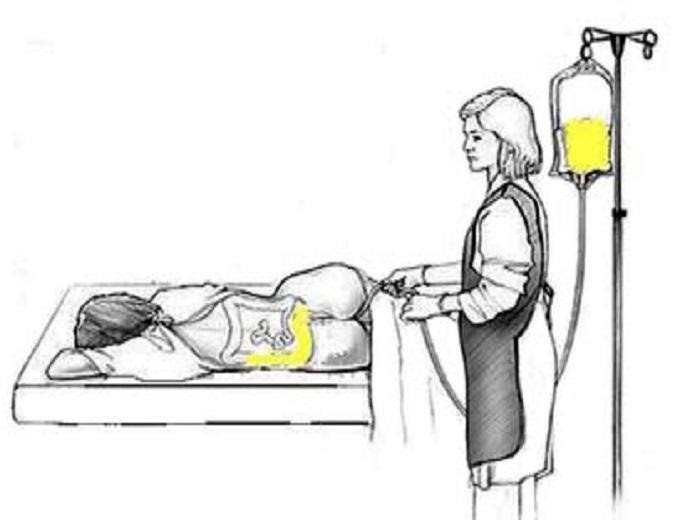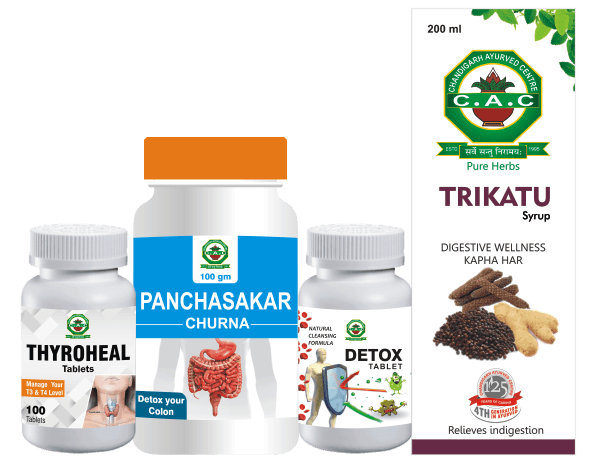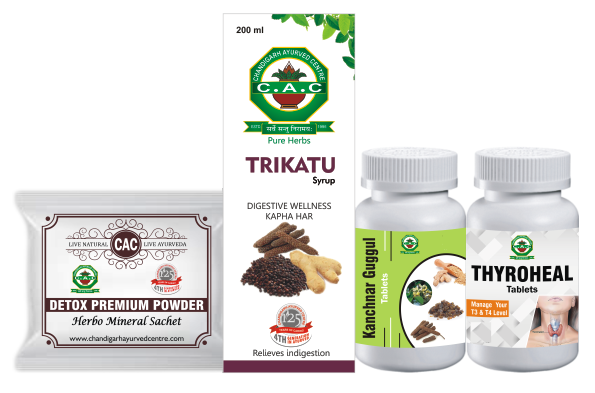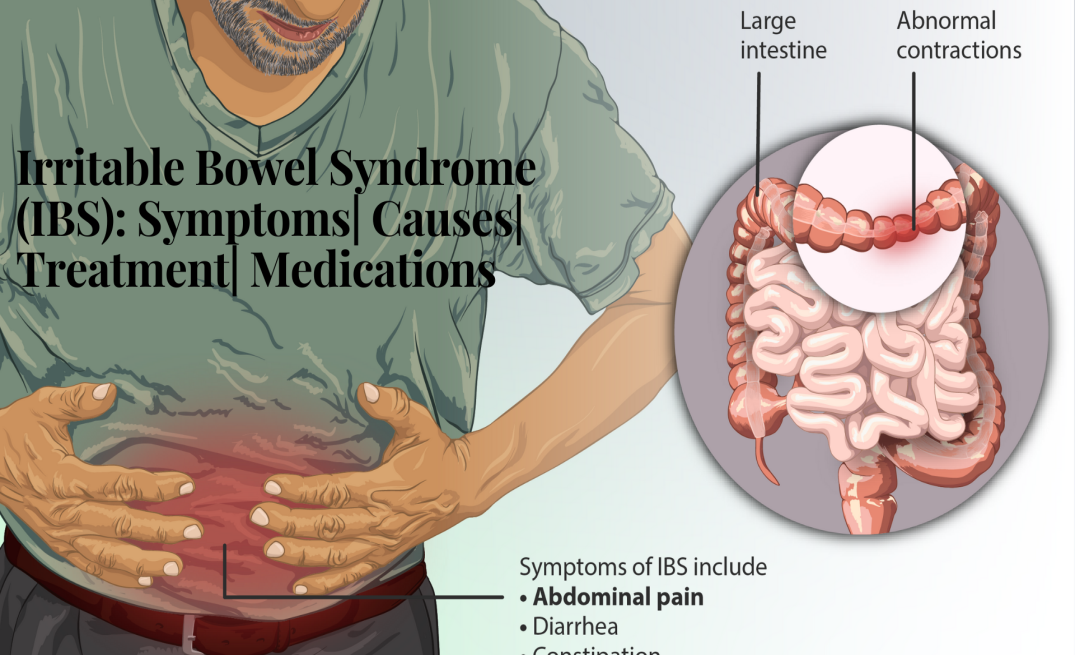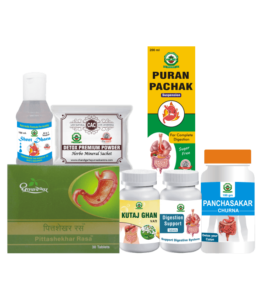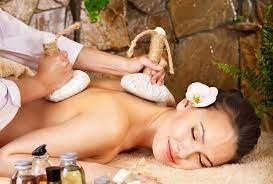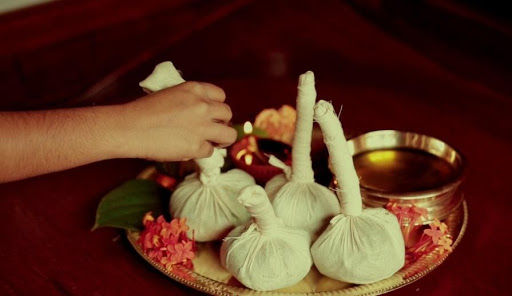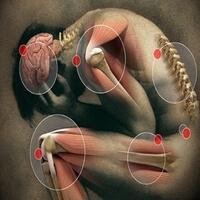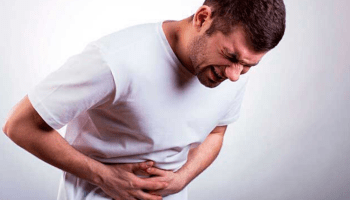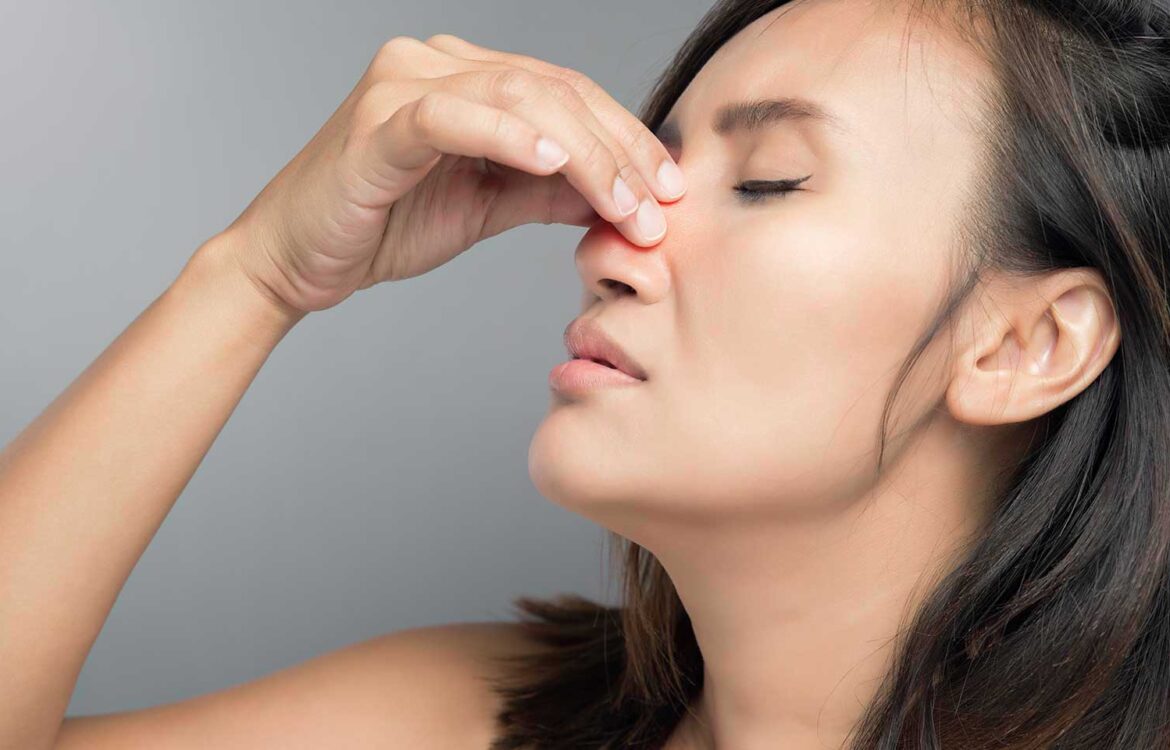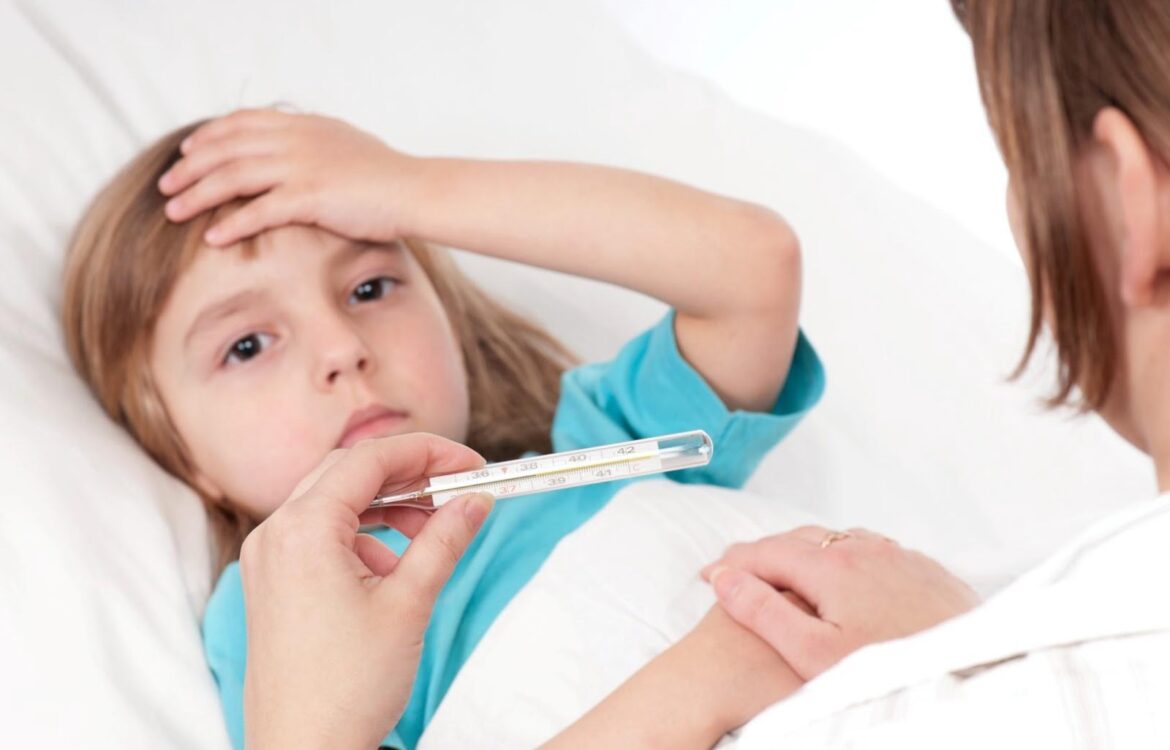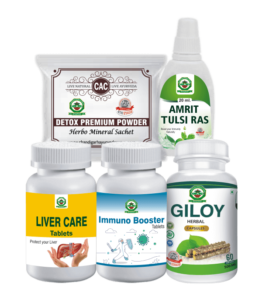Author Archives: Dr. Vaidya Karanvir Singh
HOW VASTI BENEFICIAL IN VATA ROGA
- June 21, 2021
- Posted by Dr. Vaidya Karanvir Singh
- 0 Comment(s)
WHAT IS VASTI?
- It is a powerful detoxification and rejuvenation technique in which the medicated oil and decoction is inserted through the anal canal.
- According to the Ayurveda Classical Texts, the administration of vasti is done with the help of Animal Bladder(vasti) that’s why it is termed as “VASTI”. Nowadays, there is use of disposable tips (nethram) & vasti bags (plastic) or Basti patra with a permanent barrel body.
- Basti is one of the five Pradhana Karmas of Panchakarma and it is best therapy in the treatment of vata disorders.
- Medicated oil or ghee and an herbal decoction are given as an enema to cleanse the colon and increase the muscle tone.
- Duration of Vasti- For 8 to 30 days i.e. based on the severity and condition of the person.
The commonly used vasti is of two types-
- Anuvasana Basti- In this type of Vasti medicated oil is used for the procedure.
- Niruha Basti- In this type of Vasti Medicated decoction is used for the procedure.
Both are administered on an alternative basis starting with the Anuvasana basti or oil enema Therapy and also ending with the oil Enema therapy. Both are administered through the rectal route.
EFFECT OF BASTI
Its effects can be seen in overall body from the tip of toe till the roots of the hair.
Dravyas present in Basti normalizes the Apana Vayu (Type of vata present in the Pelvic area) and make it to function normally. It also enhances the function of Purisha (Excretory products) leads to correction of Agni Dushti.
WHAT IS VATA DOSHA?
- The Vata, Pitta and Kapha are the three humors present in the body. The term Vata means blow or to move like a wind. It consists of the elements like Vayu (air) and Aakash (space).
- Properties of Vata– Ruksha(dry),Laghu(light),Sheeta(cold), Khara(Rough), Sukhma(Minute), Chal(moving or quick)
- It regulates all activity or movement in the body i.e. mental as well as physiological functions.
- The Function of vata is to control the flow of the blood, Breathing, Elimination of waste, giving rise to the thoughts across the brain, beating of the heart etc.
VASTI AND VATA DISORDERS
Vata disorders are caused due to imbalance of the vata dosha in the body.
“Vasti vata haranam Shreshtatam”- Vasti is considered as the main treatment for the Vata Dosha.
Vasti is not only for Vata disorders but it also effective in correcting the imbalanced Pitta and Kapha. It is the most important shodhana karma in all Manovikara (Psychological disorders) which are caused due to excessive vata.
VASTI AND GUT BRAIN-
Vata plays an important role in ayurveda. It controls the entire physiological functions in the human body. The main seat of Vata is the Pakwasaya.
The gut–brain axis is the biochemical signaling that takes place in between the gastrointestinal tract and the CNS or central nervous system.
The vata governs the nervous system so the medication inserted through the rectum directly act on the Central nervous system thus balancing the vata in the body.
Benefits of Basti Karma
If this therapy is properly prepared and administered, it can be extremely beneficial to the human body.
- It helps to balance the three Doshas of the body, particularly the Vata Dosha.
- It helps to nourish the flora of colon.
- It also enhances the immune system by cleansing and nourishing the colon of an individual.
- It puts the body into a state of total balance by nourishing the base prana of the body which is formed in the colon.
- It is administered in the region of the colon, but its impact is reaching far and deep.
- It helps in bowel regularity, treating gastric issues, strengthening nervous system
- It promotes healthy sleep patterns.
- It promotes longevity and shows anti-ageing effects.
- It promotes overall well-being and a healthy glow.
- It excellently decreases lower backache, and pain caused by gout and rheumatism.
- It is helpful in curing Constipation and flatulence.
- It is also recommended for neurological ailments like Paralysis
CONTRAINDICATION –
- Pregnancy
- Menstruation
- Diarrhea
- Inflammation of the anal region or rectal bleeding
- Extreme weakness or debility.
- Dizziness and Vertigo
Note- It is advised to take this therapy after consultation with a skilled Panchakarma Doctor.
HOW NASYAM IS HELFUL IN SINUSITIS
- June 21, 2021
- Posted by Dr. Vaidya Karanvir Singh
- 0 Comment(s)
INTRODUCTION-
Acharya Sushruta, while dealing with the diseases of the nose, devoted a separate chapter to Pratishyaya after explaining Nasagata Roga in detail.DushtaPratishyaya has not been mentioned as a separate disease but, rather, is considered to be the complication of different types of Pratishyaya.
The features of the DushtaPratishyaya are similar to that of chronic sinusitis in modern science. Sinusitisis an inflammation or swelling of the tissue lining the sinuses. Sinusesmake mucus, which keeps the inside of your nose moist. That, in turn, helps protect against dust, allergens, and pollutants.
Healthy sinuses are filled with air. But when they become blocked and filled with fluid, germs can grow and cause an infection. In ayurveda, Nasya is one of the most significant treatment for sinus infection.
INDICATIONS OF NASYAM-
- Sinus pain and congestion
- Stiffness or pain of head, neck, or jaw
- Headache and Migraine
- Toothache, loose teeth, receding gums
- Hoarseness of voice
- Twitching or drooping eyelids
- Tingling sensations on face
- Obstruction in throat
- Uvulitis, Tonsillitis, Laryngitis, Pharyngitis
- Speech disorders and loss of speech
- Bell’s Palsy (facial paralysis)
- Goiter (gandamaala)
- Glaucoma (Adhimantha)
- Pituitary or space-occupying tumor
- Unconsciousness/fainting
- Depleted sexual energy
- Any disorders above clavicle area
How is Nasyam perfomed?
- This Ayurvedic treatment is one of the five detoxing actions of a Panchakarma.
- The nose is the door to consciousness and the pathway to our inner pharmacy.
- Medications that are administered via the nasal passages affect the mind, pranavata, tarpakakapha, sadhaka pitta, and majjadhatu.
- Nasya means putting medicated herbal oils, herbal extracts or herbal powders in each nostril according to dosha
- It starts with facial oil massage and application of steam to face, forehead, head, ears and neck which helps to loosen the adhesive doshas.
- After this, drops of lukewarm medicated oil is instilled in both the nostrils.
- The soles of the feet, shoulder, neck, ears and palms are then gently massaged.
- one of the main formulation of nasya is anutailam.
- Anutailam is a strong herbal formulation. After nasya with anutailam there may be slight burning sensation and headaches present. This will help to expel the impurities out.
- The powerful Nasyam (purgative) is used for treating diseases above the chest, such as diseases of ear, nose, eyes and throat.
- By nasya the impurities accumulated over the head including sinus cavities, ears, eyes and throat are expelling out.
- Nasya is very good to improve the clarity of voice, mind, improve memory and relief the stiffness of facial muscles
- The main indication of nasya includes sinusitis, migraine, various headaches, problems of eyes, ear, anxiety, nasal polyps, nasal congestion, neurological disorders and premature greying of hair.
- The excess of toxins accumulated in the throat, nose and head is eliminated.
TYPES OF NASYAM-
There are five types of Nasyam which are mentioned below:
VIRECHANA NASYAM–
- Strong medicines are used in virechana(cleansing) nasyato expel out the doshasincontiently from the head region.
- Commonly used substances include vacha (calamus), brahmi (gotu kola), and jatamamsi.
BRIMHANA NASYAM
- Nutritive/brimhananasya is good for vatadosha.
- It nourishes and strengthens the head region, senses and intellectual functions.
- In this type of nasyaused substances are medicated ghee, salt, shatavari ghee, ashwagandha ghee, medicated milk, and various oils.
SAMANA NASYAM–
- Sedativenasyasubsidises the increase of a dosha without expelling it out.
- It is moderate, neither too strong nor too mild.
- This is good mainly in conditions like skin discolouration, hair loss and eye diseases.
- Substances used include brahmighee (for pitta), vacha oil (kapha or vata), and tikta ghee (vata or pitta).
- The amount of medicines can be either 4 or 6 drops of medicated oil depending upon the dosha involvement.
NAVANA NASYA–
- Decoctions (kadhaa), fresh juices, and oils are mixed together and administered according to the aggravated dosha.
- Navananasyavery useful in pitta-vata or pitta-kapha disorders.
- Substances used include brahmi juice (for pitta) and vacha juice (for kapha or vata).
5 MARSHYA NASYA-
- A little ghee or oil is administered into the both nostrils with the little finger.
- This, along with gentle massage, helps to relieve stress and opens the deep tissues.
- It can be done on a regular basis or occasionally as desired.
BENEFITS OF NASYAM –
- Nasya improves the activity of sense organs and protects the person from diseases of upper thorax.
- Nasya is a great choice of treatment for sinusitis.
- Nutritative nasya lubricates the nasal passage.
- Relieves from chronic headache.
- It relieves from earache,tinitisand clears the throat.
- Releases stress and tension from shoulder and neck area
- Relieves from migraine pain.
- Nasyam keeps the eyes, nose and ear healthy.
- It prevents premature greying of hair.
- It prevents early aging process.
CONTRAINDICATIONS-
- Children under age of 7
- Old age (over 80)
- Pregnant womens
- during periods nasya is contraindicated
- Just before or after shower/bath
- Indigestion (Ajeerna) or full stomach
- Diarhhea (Atisara)
- Hunger or Hypoglycaemia
- Thirst or Dehydration
- After Exertion
- Intoxication
- Physical exercise
- Just having done purgation or basti
- Acute fever
- Grief
- Same time as neti pot nasal cleansing
HOW SHIRODHARA HELPFUL IN INSOMNIA
- June 21, 2021
- Posted by Dr. Vaidya Karanvir Singh
- 0 Comment(s)
INTRODUCTION–
In the science of Ayurveda, Nindra (sleep) is considered as one of the tripods of life. Life or death of a person significantly depends on the sleeping pattern and quality of rest. But, in current epoch, adopting modern life style and several social and environmental distresses are increases the stress levels across the globe. Many are experiencing high pressure and stressful life in this competitive world many people are suffering from high blood pressure and stressful life. Stress is a stimulus that disturbs human’s mental or physical resemblance. Chronic stress leads to Insomnia, which is known as ‘Anidra’. If insomnia is not treated in earlier stage, it may lead to anxiety and other psychosomatic disorders. There are various treatments in Ayurveda but shirodhara is a great line of treatment for insomnia.
VARIOUS NAMES OF SHIRODHARA-
- Shiro Sheka
- Sirothara
- Parisheka
- Shiro Parisheka
- Dhara
- Shirashek
INDICATIONS OF SHIRODHARA–
- Insomnia and depression
- Sinusitis and allergic rhinitis
- Hair loss and greying of hair
- Neurological disorders
- Memory loss
- Hearing impairment and tinnitus
- Eye disorders
- Vertigo and headache
- Skin diseases like psoriasis.
METHOD OF SHIRODHARA-
Shirodhara is a Sanskrit word
Shiro=head dhara= Pouring medicine
- Loss of sleep can be extremely debilitating and can lead to exhaustion, lethargy and can also disturb your physical and emotional being.
- An excessive accumulation of vata dosha can lead to insomnia. shirodhara ultimate remedy of pacifying the abnormal vata doshas and improves quality of sleep.
- The herbal oil used in this treatment balances the cool, light, and fluctuating nature of the Vata dosha and hence provides relief from the various underlying symptoms of incresed Vata.
- In this treatment, medicinal oils and other fluids will be poured onto the head and scalp in a rhythmic way from certain height for prescribed time.
- It produces a soothing and calming sensation on the muscles of the head, which in turn passes via the superficial peripheral nerves of the forehead to the brain.
- The Luke warm herbal oils used for this procedure stimulates the various vital points all around the head and improves blood circulation in the brain.
- Shiro dhara is a most effective process of controlling or maintaining prana and vyana vatas, tarpaka, kapha and alochaka pitta.
- It maintains mental and physical equilibrium and also regulates the bioclocks of the human mind and body.
- It regulates the activity of the pituitary gland and treats conditions like insomnia (Anidra) by inducing sleep.
- The massage brings down the elevated serotonin levels, a neurotransmitter that stabilizes our mood, feelings of well-being, and happiness.
- It also decreases the level of adrenaline and noradrenaline hormones thus relax the mind and thereby helps in reducing stress and provides sound sleep.
- Hence corrects the pain stimulus and sleep disorders are also another segment where in shiro dhara helps.
TYPES OF SHIRODHARA-
Taila Dhara–
A single type of oil or a mixture of several ayurvedic oils are used in Taila dhara type of massage.
Takra Dhara
Takra dhara mostly uses buttermilk as the main ingredient.
Kwatha Dhara –
Depending upon the diagnosed condition or dosha imbalance, the main ingredient in kwatha dhara consists of decoctions made by using various herbs.
Ksheerdhara-
This type mostly uses milk as the main ingredient for the treatment
Jala Dhara
This type mostly uses coconut water as the main ingredient for the treatment. Generally used in case of Pitta imbalance in the body.
CONTRAINDICATION-
Shirodhara should not be done in the following conditions–
- Women at the last stage of pregnancy
- People having allergic reaction towards oil
- People suffering from nausea, vomiting, fever, fatigue or excessive sweating conditions.
- People suffering from a neck injury, brain tumour, or have cuts or abrasions on the forehead.
HOW AYURVEDA CAN TREAT THYROID IN NATURAL WAY
- June 21, 2021
- Posted by Dr. Vaidya Karanvir Singh
- 0 Comment(s)
INTRODUCTION-
The thyroid gland is an endocrine gland present in the neck and diseases of these glands are most commonly attributed to reduced or excessive intake of iodine and tyrosine. Some common reasons for thyroid disorders are Tumours of thyroid glands, excess stress, reduced or excessive intake of side effects of medicines, and toxicity of the goitre etc. Thyroid gland produces hormones known as thyroxine/T4, triiodothyronine/T3, & calcitonin. Thyroid disorders can be caused by an overproduction or underproduction of thyroid hormones.
Everyone required a body that is healthy and disease free. The ayurvedic treatment provides natural remedy for Thyroid with customized herbal medicines, diet and lifestyle plans which addresses the root-cause of the problem.
AYURVEDA AND THE THYROID-
In Ayurveda, the thyroid is located near Vishuddi Chakra (in the throat area) and is made up of Pitta and Kapha Doshas. The thyroid is the centre of fire energy (Agni) and its functions are to stimulate psychic and somatic growth, secrete hormones, balance metabolism, and control bodily functions. The thyroid responds rapidly to stimuli and to stress, and is a very sensitive gland.
TYPES OF THYROID DISEASE-
The two main types of thyroid disease are hypothyroidism and hyperthyroidism.
HYPOTHYROIDISM-
Hypothyroidism is when the thyroid gland’s hormone production slows down. As a result, the metabolism of the body also slows down. A person who has hypothyroidism tends to gain weight.
Symptoms –
- General fatigue and tiredness
- Low blood pressure
- Reactive Hypoglycemia
- Unexplained weight gain
- Dryness of skin
- A puffy face
- Constipation
- General muscle weakness
- Increased cholesterol levels
- Stiffness and general muscle soreness
- Swelling of the joints and associated soreness
HYPERTHYROIDISM-
Hyperthyroidism is a condition where the thyroid gland produces too much of the thyroid hormones. If a person has hyperthyroidism it means the person will lose weight.
Hyperthyroidism can be easily confused with other health problems. Its range of symptoms includes:
- Sudden weight loss
- Heart palpitations
- Increased appetite
- Irregular menstruation
- Fatigue and tiredness
- Muscles weakness
- Increased sweating
- High blood pressure
- Swelling at base of your neck
- Sleeping problems
- Anxiety, irritability, and nervousness
- Enlarment of thyroid gland
- Mood swings and sleeping difficulty
- Irregular periods
- Hand trembling or slight shaking
- Hair and skin thinning
NATURAL AYURVEDA TREATMENTS FOR THYROID-
CONCEPT OF AGNI-
As per ayurveda “Agni” is a sacred fire. It is basically related to metabolic system, which includes the digestion and absorption of the foods you eat. When you have thyroid, you have an altered state of agni instead of a healthy one.
Ayurvedic medicine can be used alongside standard treatments to restore a healthy state of Agni and rebalancing the doshas in the body.
PANCHKARMA-
- The aim of Ayurveda treatment for thyroid disease, in general, is to correct the Dosha imbalance.
- This correction will help to restore the proper functions of the thyroid gland.
- Ayurvedic thyroid treatment involves clearing these channels in order to balance body energies and restore the circulation of thyroxin.
- A body massage and detoxification of the body known as Panchakarma is an Ayurvedic treatment which is very beneficial.
- In addition, Nasya (nasal treatment), Dhara over Vishudda Chakra, and Shirodhara are all very effective thyroid treatments.
- The Ayurvedic panchkarma therapies will boost the immune system and open the body channels that control healthy metabolism.
- The composition of internal medication, external treatments and Diet chart will be fixed by the physician individually and case to case.
- All the above steps taken properly will lead to a permanent cure for thyroid in Ayurveda.
PRANAYAM AND YOGA–
- The practice of Pranayama and Yoga create calm and relaxation, while the herbal treatments relieve and control stress, which appears to be a major contributor to thyroid dysfunction.
- Breathing exercises such as Ujjaya, KapalaBhata, and AnulomaViloma are valuable tools to utilize.
- They’re easy to learn and should be practiced every morning for 15 to 20 minutes.
- In addition, the yoga postures known as Sarvanga asana, Suryanamaskara, Paschimottan asana, JanuSirsasana and Halasana, and bending postures, are excellent in promoting the proper function of the thyroid gland.
HERBAL TREATMENT-
- Herbal preparations are administered to increase the digestive fire at a cellular level and to restore proper metabolism.
- There are the various ayurvedic medicines that are commonly used such as Kanchanara Gulgulu Punarnavadi Gulgulu, Shatavari, Arogyavardhini Vati and Chitrakadi Vati etc.
- Herbs like Brahmi, Ashwagandha and Jatamansi are also used.
- As prescribed by the physician followed by a treatment and detoxification plan.
DIET AND LIFE STYLE –
- People with autoimmune hyperthyroidism are advised to make dietary changes and increase the intake of foods high in iodine.
- It is advisable to use iodized salt and many food items that have high contents of Iodine like Fish, Shell Fish, Asparagus, Potatoes, White Onion are recommended.
- Foods that slow down the functioning of Thyroid gland like Sweet Potatoes, Spinach, Cabbage, Cauliflower, Broccoli, Soya should be avoided.
- Hypothyroidism patients should consume more milk.
- take more fresh fruits and vegetables.
- Specific vegetables include having cucumber in large quantities.
- This assists in treating the disease quickly.
- Also, pulses like Bengal gram and Moong Dal help in maintaining thyroid levels and treats hypothyroidism quicker.
- When Barley and rice taken in adequate amount also help in normalizing the hormone levels.
- it will benefit in the long run to neutralize the hormone.
- Avoid high fibers food because of Too much of fiber intake interferes with the hormone absorption.
- But, don’t avoid fiber completely, because it is essential as well.
- It may also prevent the body from secreting or getting the hormones it needs.
- Also, avoid taking any medicine immediately after eating high-fiber foods.
HOW AYURVEDA HELPFUL IN BACK PAIN
- June 21, 2021
- Posted by Dr. Vaidya Karanvir Singh
- 0 Comment(s)
INTRODUCTION-
Nowdays back pain is a frequent complaint. Men & women both are equally affected with back pain. Back pain can range from a dull, constant ache to a sudden, sharp pain and is considered as the costly health problems and number one cause of job disability. Ayurveda is a natural healing system. It is the world’s oldest holistic medicine. In Ayurveda science numerous back pain treatments are available.
CAUSES OF BACK PAIN
- Pelvic inflammatory disease
- Stones in the urinary tract
- Inflammation in the urinary bladder
- Congenital spinal canal stenosis
- Tumor in the spine
- Spinal Tuberculosis
- Muscle spasm and slipped disc
- Sprain, Strain and trauma etc.
- Spina bifida (an abnormal development of the spine)
- Lumbar spondylosis
- Ankylosing spondylitis
- Osteo-porosis
BACK PAIN SYMPTOMS-
Acute back pain suddenly appears and disappears. It can last as long as 3 to 4 months. Chronic back pain gradually develops and causes long- term health problems.
The most common back pain symptoms include-
- Difficulty during walking and lifting
- Increased discomfort after prolonged standing or sitting
- Trouble standing up straight
- Dull and aching pain located in your lower back
- Burning or stinging pain ranging from yourlower back to your thighs
- Muscle spasms along your back,hips and pelvis.
TREATMENT APPROACH FOR BACK PAIN-.
As per Ayurveda, space (Akash), air (Vayu), fire (Agni), water (Jala) and earth (prithvi) from the three energies, or doshas, that controls our bodies. Health issue occurs due to imbalance of our doshas.
Ayurveda treatments include herbal drugs and topical applications. You can also receive an Ayurveda oil massage (Abhayanga) or a medicated enema (Basti), kati basti and parisheka to correct your back pain.
PANCHAKARMA DETOX-
- Panchkarma detoxes and rejuvenates the body. It works to restore your immune systems, balance and overall well-being.
- Panchkarma therapies detox cleanses the body of toxic materials caused by your environment bad nutrition and diseases.
- Our bodies normally can remove waste marerials. But after long term poor lifestyle habits or genetic predispositions, internal homeostasis is interrupted.
- This allows toxins to spread throughtout the body and cause discomfort.
- Panchkarma treatments detox corrects your body’s imbalances.
- It eliminates toxins through your colon, sweat glands, lungs, bladder and intestines.
- A successful detox reduces pain and discomfort throughtout your body.
ABHYANGA /MASSAGE –
- A full body massage done with herbal Ayurvedic oils.
- It relieves pains and aches in the back by lubricating the same, improves blood circulation and channelizes nerve ending.
- Massage/ abhyanga therapy for your spine and back muscles to relieve back pain and stiffness.
- Massage improves blood circulation, which aids in recovery of muscle soreness from physical activity.
- Abhyanga relaxes back muscles for an improved range of motion.
ABHYANGA WITH POTTALI SWEDA –
- A treatment which comprises fomentation done using medicated herbs/powders; effective in lower back pain & other musculoskeletal conditions.
- In this procedure uses powders, herbs, rice, sand tied in a muslin cloth to make small satchels.
- These powders, herbs, rice or sand sacks are then heated and lightly pounded over the body or specific parts of the body as needed.
- This massage provides dry heat for aggravated Vata and vata kapha conditions.
- This helps to pacify the aggravated vata thus relieving the associated pain immediately.
ABHYANGA PARISHEKA –
- parisheka is the squeezing of warm medicated oil onto the body of the patient from a piece of cloth that is periodically soaked in a vessel containing the medicated oil.
- This therapy is done after a traditional massage.
- It helps improve muscle tone and strengthens them thereby providing the much needed support.
- Abhyanga parisheka rejuvenates the tissue good for inflammatory pains.
- Parisheka literally means squeezing.
KATI BASTI –
- In Kati Basti specially prepared warm herbaliazed oil is poured over the lower back and retained inside a well created using black gram flour or whole wheat flour.
- It is helpful in lower back pain conditions like lumbar spondylosis, inter-vertebral disc prolepses, lumbago (low back ache), and sciatica.
BASTI/ MEDICATED ENEMA-
Vata doshas is responsible for 50% of our body’s diseases. A medicated enema, also known as basti balances vata dosha.
It works your colon because your colon is what balances you vata.
Sneha Basti
Sneha Basti involves enema using medicated oil.
It is used to treat lower backache, gout and rheumatism.
Kashaya Basti
Kashaya Basti involves enema using medicated decoction.
It is used to treat lower backache, gout and rheumatism.
Get effective and safe Ayurvedic Treatment for back pain.
CHANDIGARH AYURVED & PANCHKARMA CENTRE’S BACK PAIN TREATMENT-
- CAC prepare their own ayurvedic medicinal preparations created with the help of the experience and knowledge that they had got from their ancestors.
- Our experience of over 85 years makes us the best at offering the services required to effectively heal.
- Effective treatment avoiding the need of surgery.
- A long tradition of effective healing for over 131 years.
- Safety for long term use.
- Better clinical outcomes.
- Renewed confidence in life.
- The treatment is natural and holistic.
Why CAC IBS kit is good for IBS patients
- June 19, 2021
- Posted by Dr. Vaidya Karanvir Singh
- 0 Comment(s)
Irritable Bowel Syndrome (IBS) is a long-term/chronic condition of the bowel that causes episodes of abdominal cramps, bloating, bulging and either constipation or diarrhoea. IBS is a problem with how the bowel works. There is otherwise nothing wrong with the bowel.
It can affect anyone at any age but it most often first develops in young adults. Women are affected more often than men.
Chandigarh Ayurved & panchkarma Centre provides best herbal remedies and ayurvedic treatment for irritable bowel syndrome (IBS).
THE AYURVEDIC PERSPECTIVE-
In ayurveda, Irritable Bowel Syndrome is known as ‘Grahani roga’ which is disturbed functions of the bowels and intestines. Grahani (duodenum) is the seat of Agni (digestive fire). Food is held here until it is completely digested by digestive juices. After the food is completely digested, it then passes on to the next part of the digestive tract for absorption, but if the Agni is weak, then the food is not completely digested and passes on in a half digested form.
If the food is in a half digested form, it leads to Ama formation. These toxins (Aama) will further combine with normal food leading to foul smelling stools. Hence one will also find Ama accumulation in the body when one suffers from irritable bowel syndrome.
CAUSES OF IBS-
- Muscle contractions in the intestine.
- Over activity of the nerves or muscles of the gut
- People exposed to early life stress
- Changes in gut microbes
- The suppression of natural urges
- Irregular eating habits
- Eating foods with opposing qualities
- eating incompatible foods
- Excessive eating
- Excess stress and Anxiety
SYMPTOMS OF IBS-
- Gas and bloating
- Fatigue and Difficulty Sleeping
- Food intolerance
- Changes in bowel movement
- Alternating Constipation and Diarrhea
- Pain and cramping
- Constipation and Diarrhea
- Belching and heartburn
- Feeling sick and tiredness
Why CAC IBS kit is good?
- Natural remedies for IBS may include major changes in lifestyle the dietary habits. Unless the disorder becomes long-lasting and chronic, there is no reason to panic. You can take help through Ayurveda as a part of the nature.
- We at Chandigarh Ayurved & panchkarma Centre give you the best herbal remedies and ayurvedic medicines such as the IBS Care Kit for natural and ayurvedic treatment of Irritable Bowel Syndrome.
- Ayurvedic products of CAC for Irritable Bowel Syndrome are combination of pure natural herbs and mineral which are very effective in irritable bowel syndrome.
- Our CAC formulation Kutaj Ghan vati controls diarrhoea and relieves abdominal pain and discomfort ingredients of kutaj Ghan vati like Kutaj (Holarrhena antidysenterica), Ativisha (Aconitum heterophyllum) that manage the symptoms like abdominal pain, abdominal cramps, nausea, vomiting, loose stools, general weakness, fatigue, etc.
- CAC IBS care kit show antioxidant, anti-diarrheal, anti-inflammatory and anti-spasmodic actions that help to stop diarrhoea, relieve abdominal pain or discomfort asssociated with it.
- Our panchsakar churna, digestive support and sheet dhara Provides relief from flatulence and colic, Because these are powerful digestive and prevent gas formation that causes flatulence and colic.
- CAC IBS care kit is more effective in improving overall gut functioning and health.
- The antimicrobial properties of Kutaj, Sunth help lower the colonization of harmful bacteria in the gastrointestional tract.
- This kit helps to normalize gut microbiota to improve overall gut health and functioning.
- CAC IBS care kit help in removing the toxins from the intestines and thus, cleanse the bowels.
- Manufactured from high quality herbs in GMP certified, approved plant.
- This kit treats the disease of its root with no other complication on your body.
IBS CARE KIT
ALL PRODUCTS DESCRIPTION –
PITTASHEKHAR RASA-
Ingredients-
Sootshekhar rasa, Bilva majja, Kalmegha, Shankha bhasma, Kapardika bhasma, etc.
Benefits-
- Pitta shekhar Rasa balances pitta dosha in the body.
- Regular use of these tablets improves digestion, enhances appetite, carminative, reduces acidity, prevents gastric ulcers, reduces heartburn, acts as a laxative, & reduces pain in the abdomen, etc.
Dosage- Take one tablet twice a day with normal water.
PURAN PACHAK SYRUP-
Ingredients-
Mulethi, Saunf, Vasakha, Ajwayan, Triphala, Patol, Chirayata, Guduchi, Mukta Shukti and Prpati etc.
Benefits-
- Supports the Digestive system, and maintains the doshas in our body.
- It also helps to expel out impurities or toxins (Aama) from the body.
- This syrup reduces the Acidity, Detoxify the blood and also supports the body health.
- It shows Antacid, Digestive, Anti-inflammatory, Analgesic, Expectorant, and Antioxidant properties.
Dosage-Take 2 teaspoon twice a day.
DETOX PREMIUM POWDER-
Ingredients-
Shankh bhasma, Sutshekhar ras, Parwal pishti, Shukta pishti, Giloy, Kamdudha ras, Shwet parpati etc.
Benefits-
- Premium detox powder gives calming effect on the stomach.
- Detox sachets have anti-inflammatory, antioxidant, and antacid properties.
- It mainly affects in lowering the pitta dosha of the body and maintains proper digestion of the body.
Dosage-Take 1 sachet twice a day with normal water.
KUTAJ GHAN VATI-
Ingredients- Kutaj (Holarrhena antidysenterica) and Ativisha (Aconitum heterophyllum)
Benefits-
- This vati is very useful in curing diarrhea, intestinal infection, and dysentery.
- Kutaj Ghan Vati deal with all signs & symptoms related to diarrhea patients.
Dosage- Take 2 tablets twice daily before meal with normal water.
DIGESTION SUPPORT TABLET-
Ingredients–
kutaJ chhal, bilav, dhania, mustak, shankh bhasma, piper mint, and dadima
Benefits–
- It maintains natural Ph balance in the stomach and aid digestion of all types of food.
- The herbs present in this control acidity, gas, flatulence, and constipation.
- These complex problems are the root cause of all diseases.
- If the digestive system is proper it leads to proper assimilation of the nutrients in the body.
- As per Ayurveda digestive disorders are due to the imbalance of Pitta doshas.
- Ama formation leads to digestive disorders.
Dosage-Take one tablet twice a day with normal water
PANCHSAKAR CHURNA-
Ingredients-
Saindhavan Lavana (Rock Salt), Swarnapatri (Cassia angustifolia), Shatapushpa (Anethum sowa), Shunti (Zingiber officinale), Balaharitaki (Terminalia chebula).
Benefits-
These all in combination deal with problems like loss of appetite, abdominal pain, bloating, flatulence, constipation, weak digestion, etc.
Dosage-Take one teaspoon choorna twice daily with luke warm water.
SHEET DHARA SYRUP-
Ingredients–
Ajwain Satav, Mushak Kapoor and Peppermint etc.
Benefits-
- Sheet dhara naturally relieve the symptoms like bloating, blenching, nausea, vomiting, feeling of discomfort, etc.
- The regular use of this herbal syrup neutralizes the high acid content,
abdominal pain and cramps.
Dosage: Take ½ tsp of this syrup in ½ a cup of water. Drink this mixture twice a day on an empty stomach.
ROLE OF PANCHAKARMA- PATRAPINDA POTALLI SWEDA (PPS) IN JOINT DISORDERS
- June 9, 2021
- Posted by Dr. Vaidya Karanvir Singh
- 0 Comment(s)
INTRODUCTION TO SWEDANA-
WHAT IS SWEDAN?
- Swedana is an Ayurvedic treatment which means to “perspire”. It is also known as “Steam therapy”.
- The word Sweda is derived from Sanskrit word- swid, meaning ‘to sweat or to perspire’.
- It is a body heating procedure which opens up the pores of the body and eliminates the toxins from the body.
- Snehan and swedana are the pre-procedures of Panchakarma.
WHAT IS PPS?
- “Patra” means “leaves”; “Pind” means “Bolus”; and “Sweda” means “Sweat” or it is a sweat inducing Therapy.
- Patra Pinda Pottali Sweda or PPS is a type of Shankar Sweda or Pinda Sweda in which fresh leaves of medicinal plants are collected and cutted into pieces on addition with other drugs they are roasted in a pan with the help of oil and a bolus is prepared from it.
- After that it is tied in a piece of cloth and a medicated pottali is prepared.
In this type of Sweda the following leaves are used-
- Eranda leaves(Ricinus cumunis)
- Chincha Leaves(Tamarind)
- Rasna(Pluchea lanceolata)
- Arka (Calatropis gigantea)
- Nirgundi (Vitex nigundu)
- Shigru ( Moringa oleifera)
Other ingredients – Lemon, Coconut grating, Saindhava Lavana, Methi dana powder, Rasnadi churna etc.
The property of the leaves is ushna virya (or hot in potency) and along with lemon which is having amla, ushna(hot) properties which helps in reducing the pain, inflammation and stiffness associated with the joint.
- Other ingredients – lemon, coconut grating, Saindhava Lavana, Methi dana powder, Rasnadi churna etc.
It pacifies the imbalanced doshas i.e. Vata and kapha which are the main cause of the Joint disorders.
INDICATIONS-
- Sandhi gata vata or Osteoarthritis
- Aamavata or Rheumatoid Arthritis
- Chronic back pain
- Mamsagata Vata or Musculoskeletal disorder
- Cervical Spondylitis
- Lumbar spondylitis
- Anti- Ageing
- Arthritis
- Gridhrasi or Sciatica
- Ankylosing spondylitis
- Swelling and Stiffness of the joints
- Body ache
- Stress
- Frozen shoulder
DURATION- 7 to 21 Days depending upon the severity of the disease.
Panchakarma Procedure-
Poorva karma (Pre-treatment procedures)
In this preparation of the required items is done or It includes the Preparation of the patient for the main procedure-
- Firstly the pottali’s are prepared with the above mentioned fresh leaves.
- Medicated Oil is suggested as per the disease by the MD Panchakarma expert doctor.
- Proper sanitization of the room and bed is done.
Procedure or Pradhana karma-
- Maintain the heating apparatus at a constant temperature.
- The herbal pottali is frequently dipped in the warm oil while rubbing the body with mild pressure.
- The Swedana or fomentation given in Patra Pinda Sweda therapy is carried out in 7 postures like that of Abhyanga or body massage so as to provide proper fomentation to all the parts of the body.
- A uniform temperature of the Potalli is maintained throughout the procedure by dipping it in the heated mixture of medicated decoction or oil.
Post-procedure
- After the Potalli massage there is induction of the sweat and the process is completed.
- They are advised to take rest for an hour and after that bath with warm water.
- After the procedure intake of Light diet is advised.
HOW IT IS USEFUL IN JOINT DISORDERS?
- It provides amazing effects to in management of joint disorders.
- It helps in increasing the blood circulation to the affected area, pacifies the Doshas and provide strengthen to the muscles in the area.
- It reduces the stiffness of the joints and swelling associated with the joints.
- It helps in release of harmful toxins out of the body and thus reduces inflammation.
- It also helps to tone muscles and improve the working of tissues within the body.
- It also enhances the Glow and tone of the body.
BENEFITS of PPS-
- Prevents and delays the degeneration of joints and muscle disorders
- It helps in Elimination of the toxins from the body
- It induces good sleep and relieves stress
- It improves Range of motion (ROM) of the joints.
- Improves the glow and complexion of the skin
- It helps in strengthening the muscles, bones, nerves, and tissues
- Improves the circulation of the blood.
- Helps in reducing the pain, stiffness, and inflammation. It pacifies the vata dosha.
- It is beneficial in neuralgic pain as it soothes the nerves in case of nerve disorders
- It provides good effects in case of Paralysis patients as it improves the sensory and motor functions.
Contraindications-
The Patra Pinda pottali sweda should be avoided in case of-
- Skin Allergies
- Sensitive skin
- Acute inflammation
- Pregnant women
- Diabetes
- Cardiac problems
- Hemorrhagic disorders
- Indigestion
- Fractures
- Acute illness
- Extreme fatigue
- Dizziness
NOTE- This Therapy should be done after consultation with a skilled Ayurveda Physician.
Ascites (Jalodar)
- June 9, 2021
- Posted by Dr. Vaidya Karanvir Singh
- 0 Comment(s)
Ascites is that the abnormal build-up of fluid within the abdomen. Technically, it’s over twenty five millilitre of fluid within the greater peritoneal sac, though volumes bigger than one cubic decimetre could occur. Symptoms could embrace inflated abdominal size, inflated weight, abdominal discomfort, and shortness of breath.
In Ayurveda, Ascites is called as Jalodar. Jalodar is generalised abdominal enlargement. Madagni (poor Appetites), doshati sanchaya (collection of toxicant substance in body), and Paap destiny (bad nature) are main explanation for jalodar. Pran-apan-agni dushti are main pathology in Jalodar. In fashionable science we are able to co-relate it with
ascites.
Causes of Jalodar
Ahar
- Improper and irregular diet causes the disturbance of vatadosha.
- Jirna Madyapana (Chronic Alcoholism).
- Ati-ruksha, Lawan, Vidahi Annasevan.
Vihar
- Supresion of natural national capital (chhardi vega dharan).
- Ratri jagran.
Other causes of Ascites include:
- Grume within the portal or venous blood vessel
- Sure cancers, like gonad cancer, carcinoma and carcinoma
- Symptom cardiopathy (severe deterioration of the heart’s ability to pump blood, leading to doubtless grievous congestion within the lungs and different tissues of the body)
- Renal failure (severe deterioration of excretory organ operate, leading to a buildup of waste and fluid within the body additionally as different serious problems)
- Nephrosis (type of excretory organ disease)
- Rubor
Symptoms of Ascites
- Swelling within the abdomen
- Weight gain
- Sense of fullness
- Bloating
- Sense of heaviness
- Nausea or stomach upset
- Vomiting
- Swelling within the lower legs
- Shortness of breath
- Hemorrhoids
- Bleeding, like inborn reflex blood, bloody stools or major body part hemorrhage
- pain or discomfort
- Confusion, disorientation, or modification in consciousness, like lethargy, weakened alertness, quality or passing out
- Loose, wet cough with frothy phlegm and probably blood-tinged phlegm
temperament changes and poor psychological feature functioning thanks to the lack of the liver to filter toxins and a buildup of waste merchandise within the blood and brain - Shortness of breath, problem respiration, wheezing or alternative uncommon respiration noises.
Risk Factors
The risk factors of Ascites are:
- Diets with low protein content
- Excessive consumption of alcohol
- Hepatitis
- Cardiac diseases
- Cirrhosis
- Chronic liver diseases
- Portal hypertension
Management of Ascites
Prevention:
Ascites is prevented with the subsequent preventative methods:
- Reduced consumption of alcohol and tobacco
- Maintaining a healthy weight
- Limiting the intake of salt within the diet
- active sex to avoid liver disease
- Avoiding recreational medication that would cause liver disease
Pathya – Apathya (Diet and life style):
Do’s –
Ahara: solely milk diet is suggested. Goat / artiodactyl mammal / cow / buffalo milk, buttermilk, Peya – Jangala Mamsa Rasa, Khichadi ready with seasoned rice and Moong Daal, Shigru, recent vegetables soup. Diet with Deepana (digestive) property and Laghu (light to digest) property
e.g. Yavagu, Yusha, Tilanala Kshara or Palasha Kshara, Vartaka Kshara, Swarjika Kshara etc. semi liquids ar suggested. Yava along side Vastuka (Bathua leaves), Karela (Karavellaka) ar suggested.
Vihara: Timely meals, relaxation techniques
Don’ts –
Ahara: Salt and water intake ought to be restricted, heavy food, green peas, black ox-eyed beans, lentils, yellow gram, raw vegetables and
salads, refined foods like white flour (Maida- bread, pizza, biscuits), sprouts, etc. ar contraindicated.
Nasal Polyps (Nasa-Arsha)
- June 9, 2021
- Posted by Dr. Vaidya Karanvir Singh
- 0 Comment(s)
Nasal polyps are boom of gentle tissues at the lining of the nasal passage or sinus. In Ayurvedic samhita, nasal polyps are called Nasarsha.
Nasa arsha is a Kapha vata vyadhi located in Urdwanga which is a kapha
Sthaan. The aggravated Doshas when moved upwards occupying ear, eye, nose, and mouth, vitiated their Mamsa, and Rakta and produce Arsha.
Causes of Nasal Polyps
- Persistent or routine sinus infections
- Asthma
- Allergic rhinitis (hay fever)
- Cystic fibrosis
- Churg-Strauss syndrome
- Sensitivity to nonsteroidal anti inflammatory drugs (NSAIDs) which includes ibuprofen or aspirin
Symptoms of Nasal polyps
Symptoms include:
- Runny nose – this will be chronic, with the affected person feeling as though they usually have a cold
- Persistent stuffy or blocked nose – in a few cases, the affected person may also locate it difficult to respire via the nose, inflicting sound asleep problems
- Postnasal drip – a sense of mucus always jogging down the lower back of the throat
- Either no feel of odor or terrible feel of odor – this will now no longer enhance after polyps are treated
- Poor feel of taste – this will now no longer enhance after polyps are treated
- Pain with in face
- Headache
- Snoring
- Itchiness across the eyes
- Obstructive sleep apnea (in excessive cases) – that is a doubtlessly critical circumstance in which the affected person stops respiration at some point of sleep
- Double vision (in excessive cases) – much more likely to arise if the affected person has allergic fungal sinusitis or cystic fibrosis
Investgations
Nasal endoscopy – a slender tube with a small camera (or magnifying lens) is inserted into the affected person’s nose.
CT scan – this permits the doctor to find nasal polyps and different abnormalities related to persistent inflammation. The health practitioner can also be capable of pick out another obstruction.
Skin prick allergy test – if the health practitioner thinks that hypersensitive reactions can be contributing to polyp development, she or he might also additionally do a hypersensitivity test.
Cystic fibrosis – if the affected person is a younger child, the health practitioner might also additionally order a cystic fibrosis test.
Ayurvedic Management of Nasal polyps
Ayurvedic treatment has been located very powerful on this case. Shodhana Chikitsa with Nasya karma become located useful withinside the control of nasal polyp withinside the gift case, and preserving right follows pathya and apathya for the patients.
Nasa Arsha is one of the predominant surgical disorders in nasal disorder; there may be hazard of recurrence after surgery. We can deal with with the aid of using Ayurvedic line of remedy without problems and extra powerful then allopathic science. There is no hazard of recurrence of disorder.
ROLE OF AYURVEDA IN TREATMENT OF TYPHOID
- June 8, 2021
- Posted by Dr. Vaidya Karanvir Singh
- 0 Comment(s)
INTRODUCTION
WHAT IS TYPHOID FEVER??
It is also known as enteric fever. It rare in industrializes countries but in developing countries like India it still remains a serious threat, especially for the children.
CAUSITIVE ORGANISM- Salmonella typhi- It is a bacteria which infects the blood and the intestinal tract.
Incubation period- 6 to 30days or 1-3 weeks after exposure the symptoms appear.
MODE OF TRANSMISSION- It spreads through the following ways-
Fecal-oral transmission route-
The bacteria are transmitted through contaminated food or water and may also transmit through direct contact an infected person. It can also spread through the faeco-oral route, i.e. it is passed in the feces and sometimes in the urine of the infected person.
Typhoid carriers
Despite of treatment with antibiotics, many sufferers continue to harbor the bacteria in their intestinal tracts or gallbladders.
These carriers are capable of infecting others as they continue to shed the bacteria through the feces.
SIGNS AND SYMPTOMS-
The person may notice the following signs and symptoms-
Early infection –
In early stage the person may experience-
- Mild fever that increases daily, may reach as high as 104.9 F (40.5 C)
- Headache
- Muscle pains
- Weakness and fatigue
- Excessive Sweating
- Dry cough
- Decreased or Loss of appetite
- Loss of Weight
- Stomach ache
- Constipation or diarrhea
Later stage of infection-
If the person ignores the early symptoms or there is delay in treatment i.e. lack of care then the person may experience-
- Disturbed state of mind
- Typhoid state – Where a patient lies motionless and exhausted
- In addition, life-threatening complications often develop at this time.
In some people, 2 weeks after the fever has subsided the signs and symptoms may return.
AYURVEDIC VIEW-
- In Ayurveda Typhoid fever may be correlated to “Sannipataj jwara”.
- Acharya Charaka described as Santata Jwara – one of the types of Vishama jwara is also having similarity with the typhoid.
- It is mentioned that jwara or fever with an imbalanced spread through rasavaha srotas or blood vessels all over the body causes stiffness in the body. It manifests its symptoms very quickly and either is cured or otherwise kills the patient on 7th, 10th or 12th day. It is very difficult to encounter this type of fever.
- The condition is asadhya or incurable if the doshas involved in Sannipata type of Jwara are similar in property to the kaala or season, Dushya or Dhatus and similar to the physical constitution (Prakruti) of a person.
- The fever would subside on the 7th, 10th and 12th day if the dhatus and waste products such as urine, stool and flatus are purified. However, If not purified then this fever is mortal for the patient on those days. Even if these dhatus are partially purified, the patient dies.
- So one should follow the treatment and dietetics in order to purify your Dhatus and malas(Excretory system).
SINGLE HERBS-
- Giloy (Tinospora cordifolia)
- Tulsi(Occimum Sanctum)
- HARIDRA OR TURMERIC
- Patola
- Nimba
- Triphala
- Mustka(Cyperus rotundus)
TREATMENT-
CAC Treatment is based on Ayurvedic principles and derived from pure natural herbs which are highly effective and work according to disease.
It works on the root cause of the disease and also nourishes and provides strength to the body.
CAC SPECIAL TYPHOID CARE KIT-
CAC Prepared “Thyroid Care kit” which is beneficial in treatment of Typhoid. These are as follow-
- Detox Premium Powder
- Amrit tulsi rasa
- Liver care Tablet
- Immuno booster tablet
- Giloy herbal capsules
Typhoid Care Kit
For detail description of the product visit-
https://www.chandigarhayurvedcentre.com/product/typhoid-care-kit
AYURVEDIC TIPS FOR TYPHOID FEVER
- By choosing Ayurveda it helps to keep a control on the rising body temperature and also strengthens the immune system of the body.
- In Ayurveda Samhitas it is recommended use of decoction (concentrated liquor) of the leaves of the following – leaf of Patola (pointed gourd) and Katukarohini (Picrorhiza kurroa).
- Other Alternatives Nimba – Neem (Azadirachta indica), Patola (pointed gourd), Triphala, raisins, Musta (Cyperus rotundus) and Vatsaka (Holarrhena antidysenterica) can also be used.
DIET RECOMMENDATIONS (AAHAR)
- One should avoid heavy food items
- One should take Rice gruel (Kanji), and rice porridge (khichari) cooked with ginger and lemon.
- Intake of Plenty of fluids.
- Strictly avoid oily and Spicy food.
- Avoid Packaged food items or Junk food items
VIHARA OR LIFESTYLE CHANGES
- It is advised to take adequate rest.
- Avoid head bath or cold shower bath.
- Diwaswapana should be avoided or avoid day sleep or excessive sleep
- Maintain Hygiene like frequent changing of blankets or bed sheet and also maintain oral hygiene.


